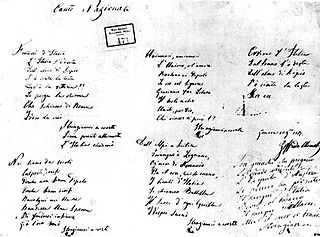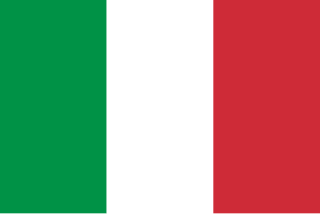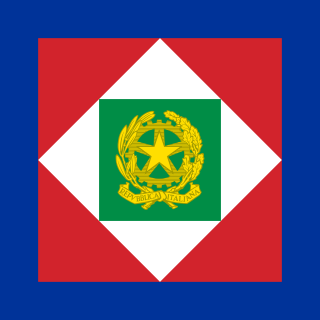 W
WArbutus unedo is an evergreen shrub or small tree in the flowering plant family Ericaceae native to the Mediterranean region and western Europe, particularly northern and western France and southwestern and northwestern Ireland. The tree is well known for its fruit, which bear some resemblance to the strawberry—hence the common name "strawberry tree." However, it is not closely related to the Fragaria plant.
 W
WThe Bollettino della Vittoria is the official document after the Armistice of Villa Giusti with which General Armando Diaz, the supreme commander of the Royal Italian Army, announced, on November 4, 1918, the surrender of the Austro-Hungarian Empire and the victory of the Kingdom of Italy in World War I.
 W
WThe Bollettino della Vittoria Navale is the official document written after the armistice of Villa Giusti with which the admiral Paolo Thaon di Revel, supreme commander of the Royal Italian Navy, announced, on 12 November 1918, the surrender on the seas of the Austro-Hungarian Empire and Italy's victory in the World War I.
 W
W"Il Canto degli Italiani" is a canto written by Goffredo Mameli set to music by Michele Novaro in 1847, and is the current national anthem of Italy. It is best known among Italians as the Inno di Mameli, after the author of the lyrics, or Fratelli d'Italia, from its opening line. The piece, a 4/4 in B-flat major, consists of six strophes and a refrain that is sung at the end of each strophe. The sixth group of verses, which is almost never performed, recalls the text of the first strophe.
 W
WThe cockade of Italy is the national ornament of Italy, obtained by folding a green, white and red ribbon into a plissé using the technique called plissage (pleating). It is one of the national symbols of Italy and is composed of the three colours of the Italian flag with the green in the centre, the white immediately outside and the red on the edge. The cockade, a revolutionary symbol par excellence, was the protagonist of the uprisings that characterized the Italian unification, being pinned on the jacket or on the hats in its tricolour form by many of the patriots of this period of Italian history. During which, the Italian Peninsula achieved its own national unity, culminating on 17 March 1861 with the proclamation of the Kingdom of Italy. On 14 June 1848, it replaced the azure cockade on the uniforms of some departments of the Royal Sardinian Army, while on 1 January 1948, with the birth of the Italian Republic, it took its place as a national ornament.
 W
WThe emblem of the Italian Republic was formally adopted by the newly formed Italian Republic on 5 May 1948. Although often referred to as a coat of arms, it is an emblem as it was designed not to conform to traditional heraldic rules. The emblem is used extensively by the Italian government.
 W
WFERT, the motto of the royal house of Savoy-Sardinia and Italy, the House of Savoy, was adopted by King Vittorio Amedeo II (1666–1732).
 W
WThe flag of Italy, often referred to in Italian as il Tricolore, is the national flag of Italy. It is a tricolour featuring three equally sized vertical pales of green, white and red, national colours of Italy, with the green at the hoist side, as defined by article 12 of the Constitution of the Italian Republic. The Italian law regulates its use and display, protecting its defense and providing for the crime of insulting it; it also prescribes its teaching in Italian schools together with other national symbols of Italy.
 W
WThe Frecce Tricolori, officially known as the 313° Gruppo Addestramento Acrobatico, Pattuglia Acrobatica Nazionale (PAN) Frecce Tricolori, is the aerobatic demonstration team of the Italian Air Force. Based at Rivolto Air Base, province of Udine, it was created on 1 March 1961 as a permanent group for the training of Air Force pilots in air acrobatics.
 W
WItalia turrita is the national personification or allegory of Italy, in the appearance of a young woman with her head surrounded by a mural crown completed by towers. It is often accompanied by the Stella d'Italia, from which the so-called Italia turrita e stellata, and by other additional attributes, the most common of which is the cornucopia. The allegorical representation with the towers, which draws its origins from ancient Rome, is typical of Italian civic heraldry, so much so that the wall crown is also the symbol of the cities of Italy.
 W
WThe Marcia Reale d'Ordinanza or Fanfara Reale was the official national anthem of the Kingdom of Italy between 1861 and 1946. It was composed in 1831 by Giuseppe Gabetti to the order of Charles Albert of Sardinia as the hymn of the royal House of Savoy, along with the Sardinian national anthem.
 W
WThe Victor Emmanuel II National Monument, also known as the Mole del Vittoriano or simply Vittoriano, is a national monument built in honour of Victor Emmanuel II, the first king of a unified Italy, located in Rome, Italy. It occupies a site between the Piazza Venezia and the Capitoline Hill. It is currently managed by the Polo Museale del Lazio and is owned by the Ministry of Cultural Heritage and Activities.
 W
WA mural crown is a crown or headpiece representing city walls or towers. In classical antiquity, it was an emblem of tutelary deities who watched over a city, and among the Romans a military decoration. Later the mural crown developed into a symbol of European heraldry, mostly for cities and towns, and in the 19th and 20th centuries was used in some republican heraldry.
 W
WThe national colours of Italy are green, white, and red, collectively known in Italian as il Tricolore. The three Italian national colours appeared for the first time in Genoa on 21 August 1789 on the cockade of Italy shortly after the outbreak of the French Revolution, on 11 October 1796 they were used for the first time in Milan on a military banner, while on 7 January 1797 in Reggio Emilia they appeared for the first time on a flag.
 W
WThe Presidential Standard of Italy is the distinctive standard of the presence of the President of the Italian Republic.
 W
WRosso corsa is the red international motor racing colour of cars entered by teams from Italy.
 W
WThe Stella d'Italia, popularly known as Stellone d'Italia, is a five-pointed white star symbolizing Italy for many centuries. It is the oldest national symbol of Italy, since it dates back to ancient Greece when Venus, associated with the West as an evening star, was adopted to identify the Italian peninsula. From an allegorical point of view, the Stella d'Italia metaphorically represents the shining destiny of Italy.